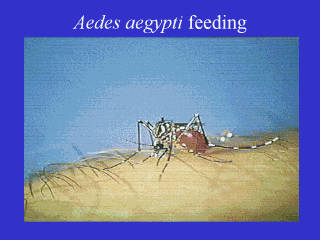 |
Dengue, an arboviral disease, is an
arthropod-borne (e.g., mosquito-borne) viral infection of humans. Arboviruses
consist of a group of animal viruses that are able to reproduce in an arthropod
and can be transmitted to a vertebrate host. Because of the degree of morbidity
and mortality involved, dengue is considered the most important arboviral
disease affecting humans. The four dengue virus serotypes, designated DEN-1,
DEN-2, DEN-3, and DEN-4, are ribonucleic acid (RNA) viruses belonging to the
genus Flavivirus of the family Flaviviridae. Epidemics of dengue fever in urban
communities are explosive and involve significant portions of the population.
They often start during the hurricane/rainy season, when the vector mosquito,
Aedes aegypti, is in abundance and thriving in urban areas.
Aedes aegypti is a domesticated
mosquito with a short flight range, and urban spread of dengue is frequently
house-to-house in a contiguous manner. The mosquito breeds in tropical or
sub-tropical climates in man-made water-holding receptacles in and around human
habitation, or in tree holes or plants in close proximity to human dwellings.
These sturdy urban survivors are found in nearly every major city in the
tropics, as well as in the sub-tropics, and they apparently prefer the blood of
humans to that of other animals.
|
